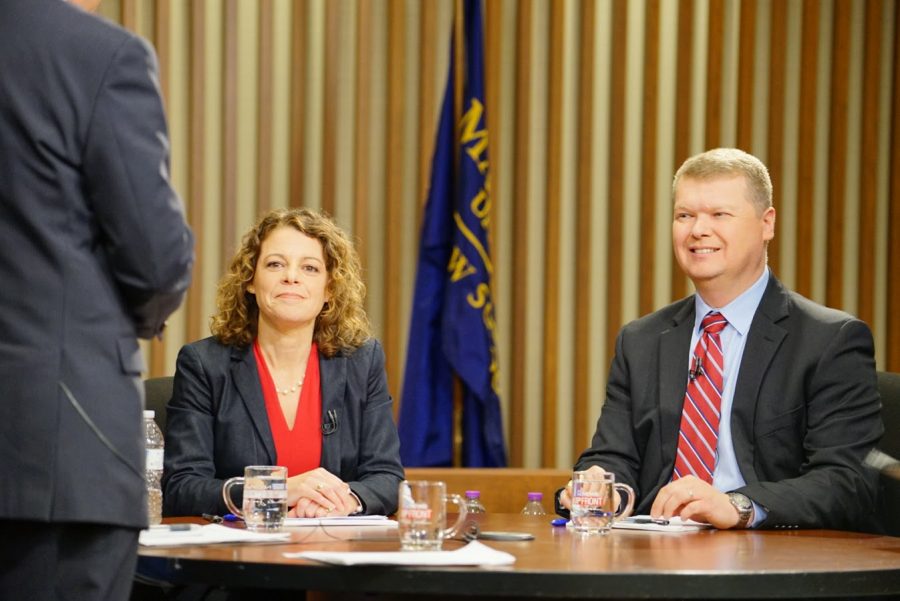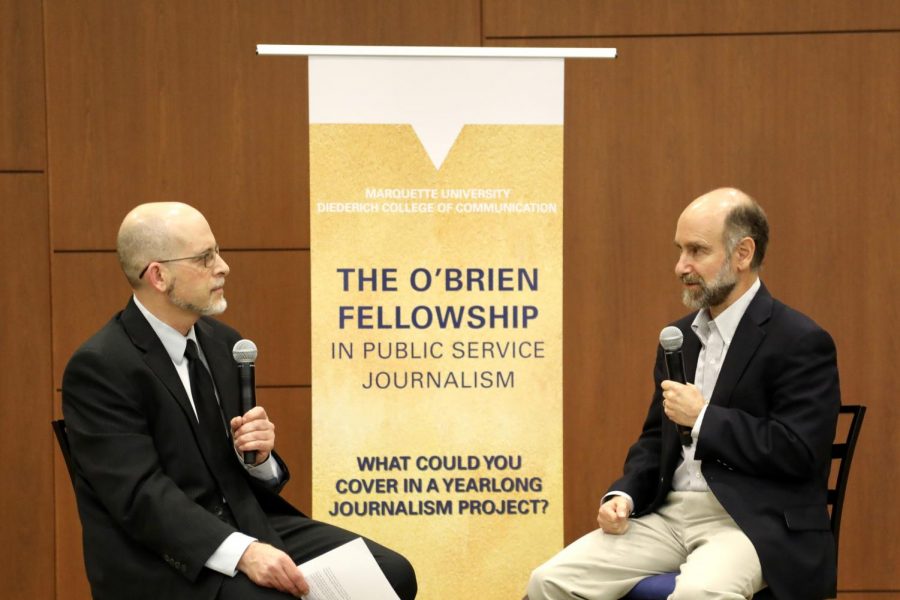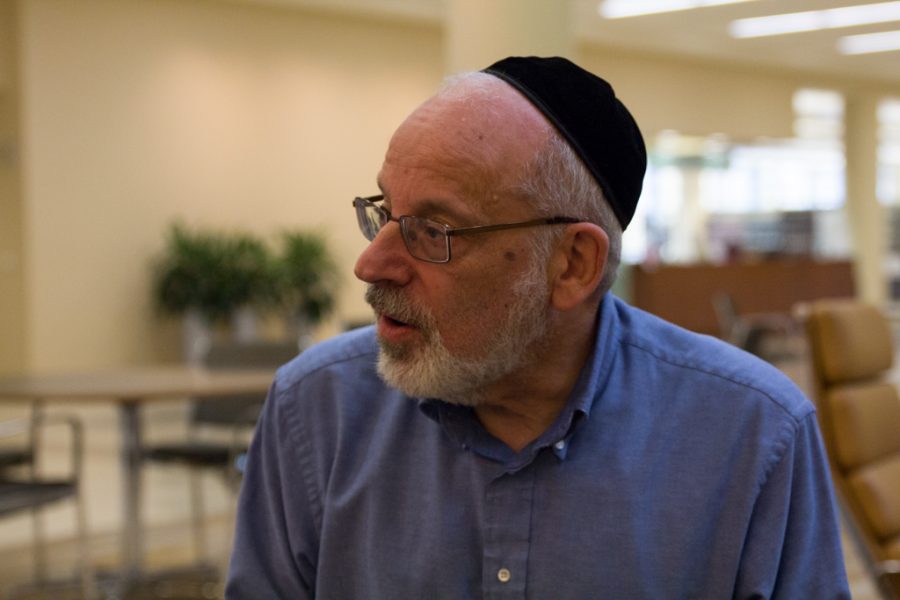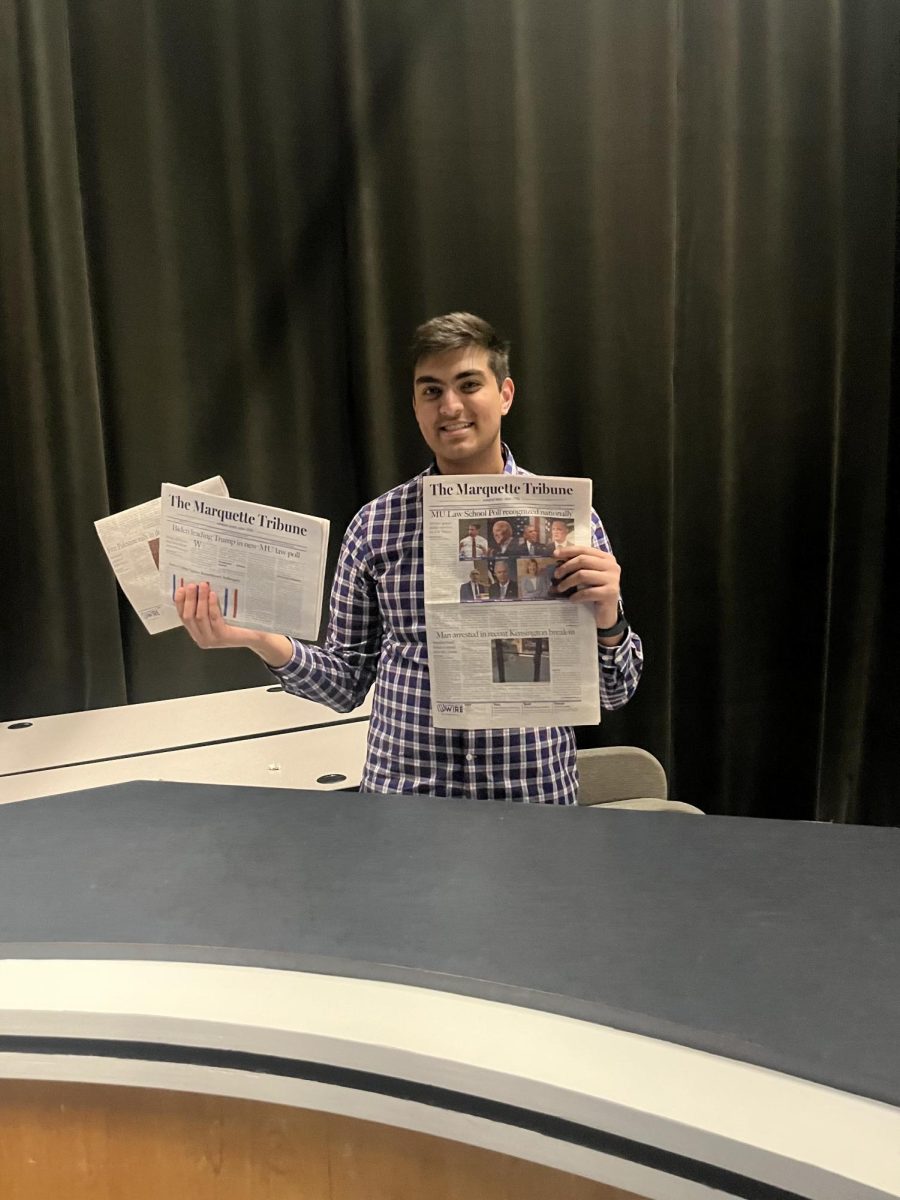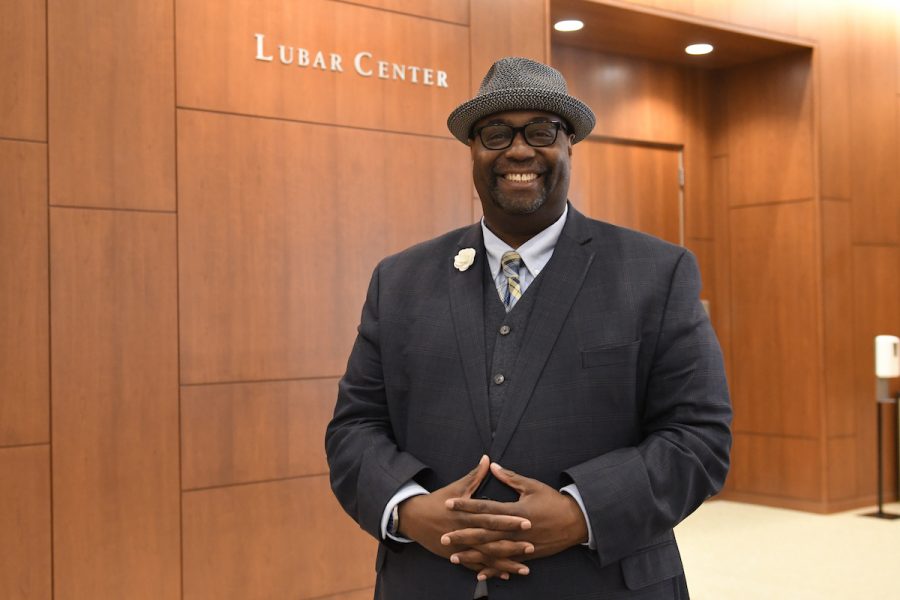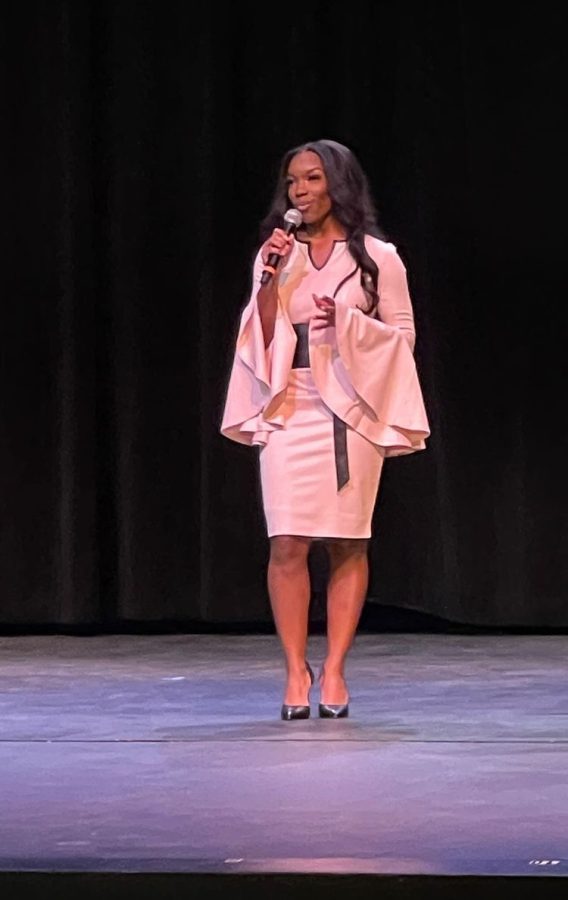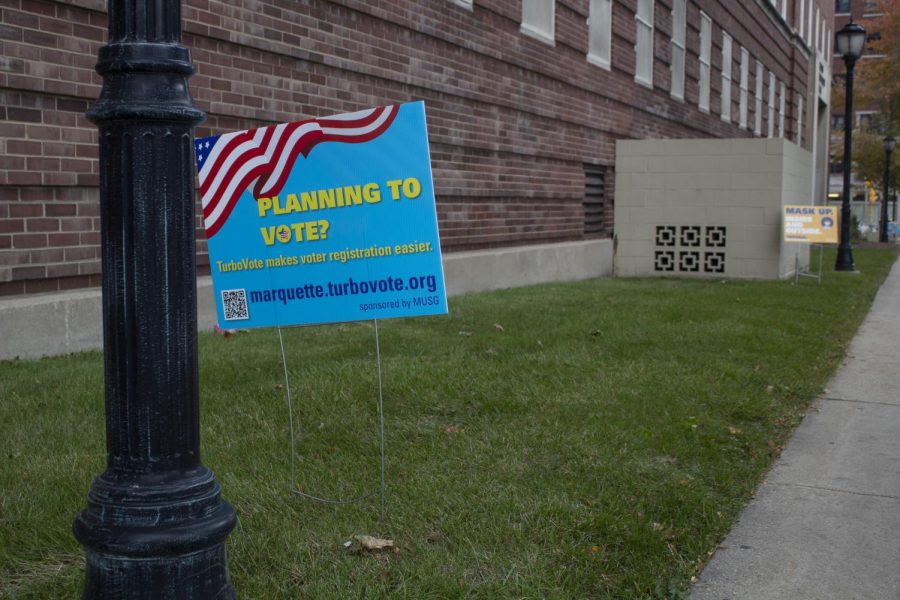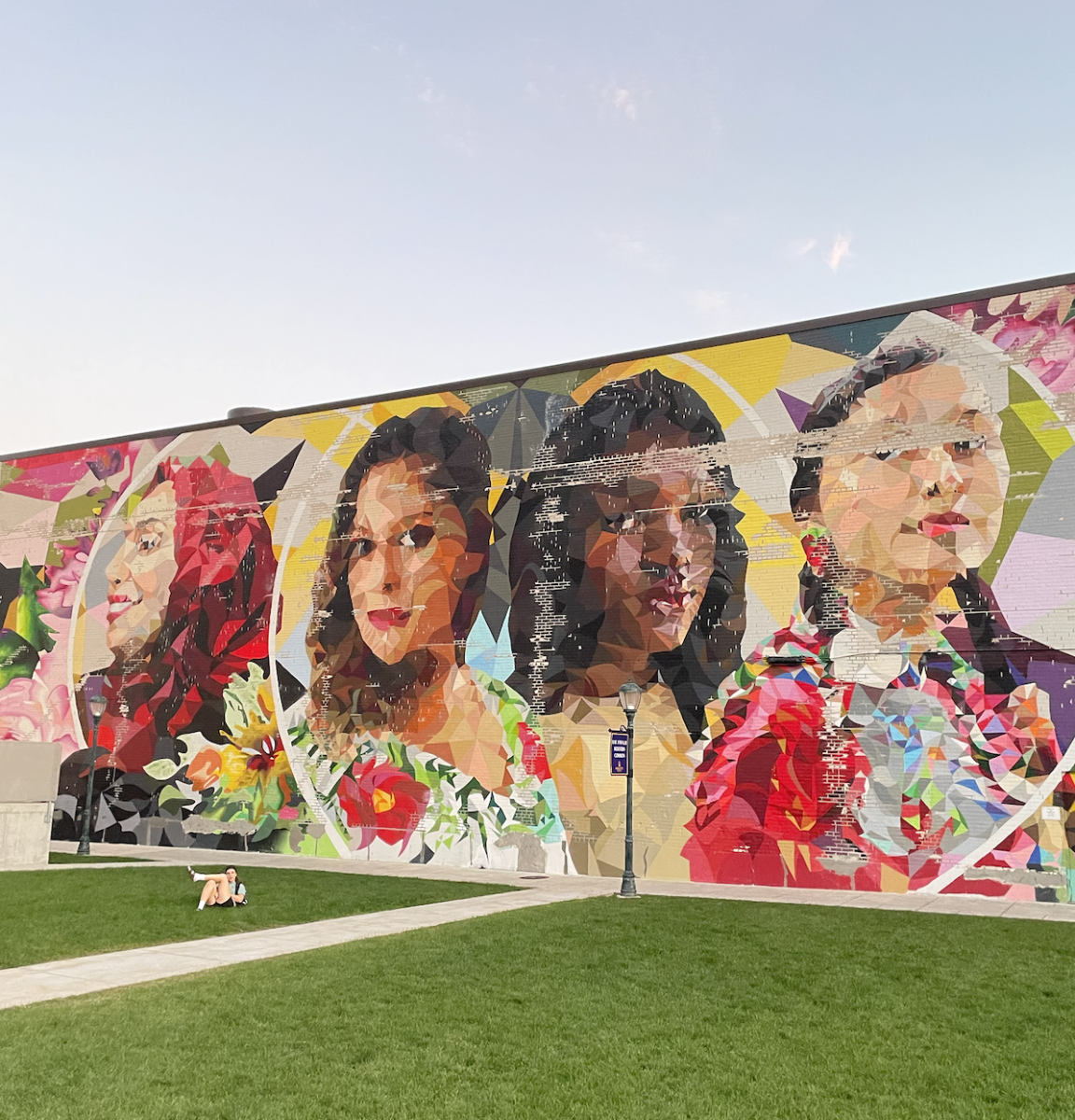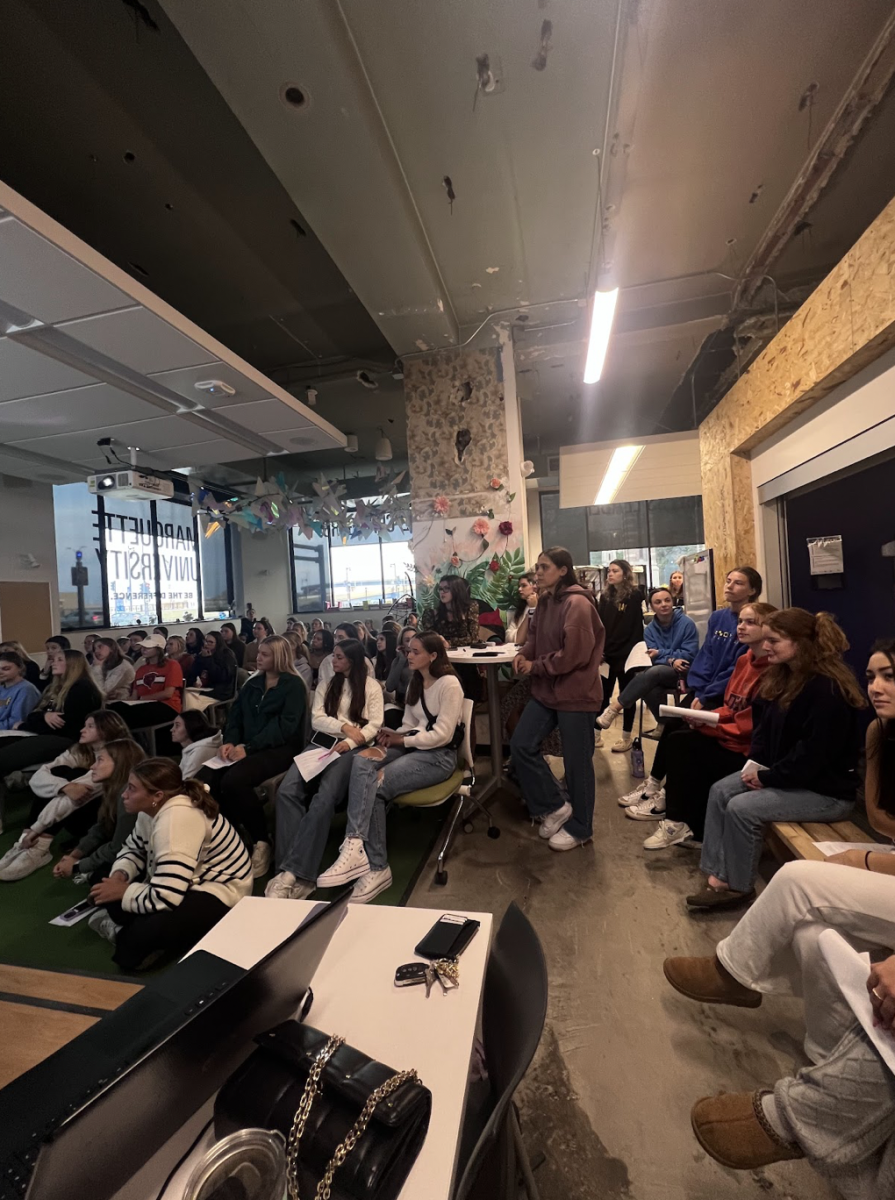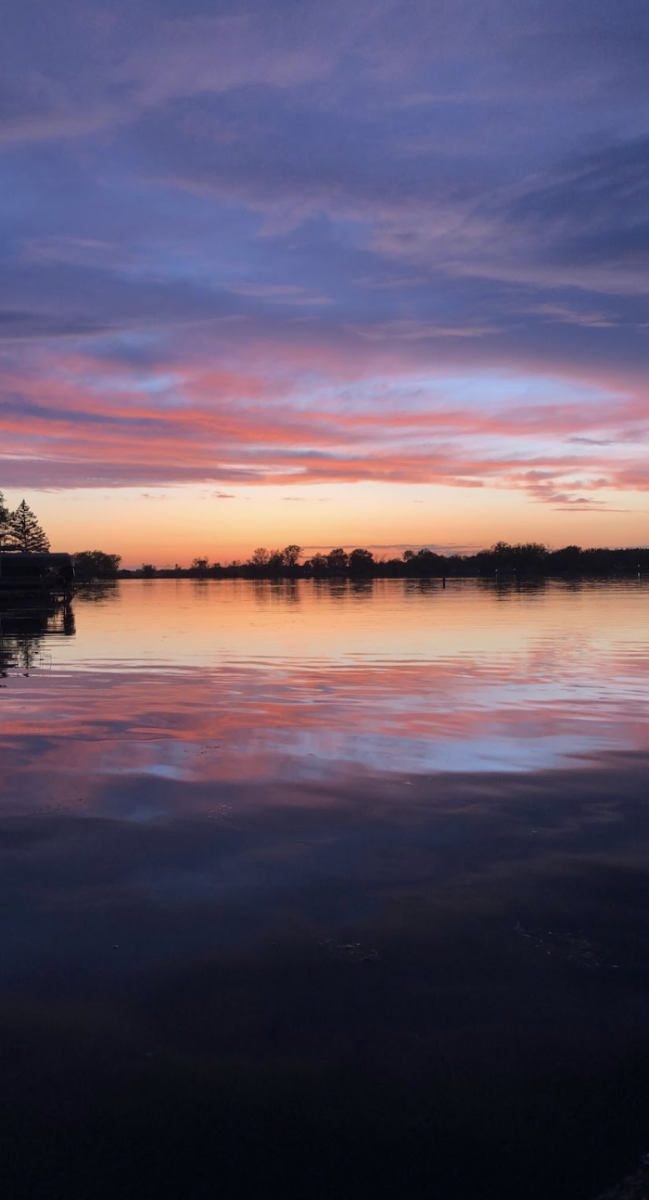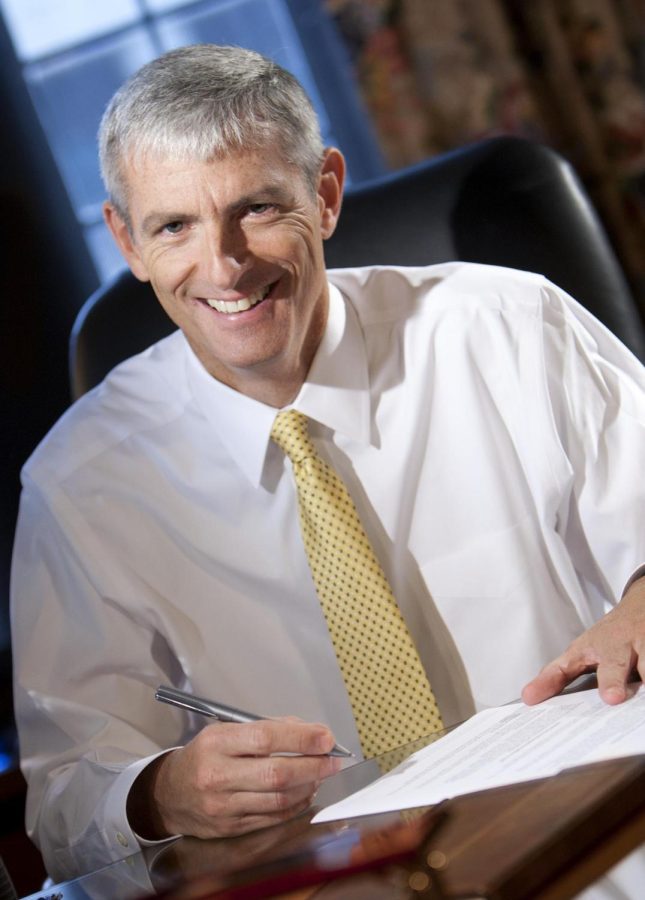When administrators broke ground on the site of the future Ray and Kay Eckstein Hall more than two years ago, they intended it to be “the best law school building in the country.” With tomorrow’s dedication marking the completion of the project, the greatness of the building is now left up to how Marquette and Milwaukee use it.
The opening of the $85 million building is attracting celebrities from all over the country, with United States Supreme Court Justice Antonin Scalia giving the keynote address, Archbishop Timothy Dolan of New York blessing the building and Wisconsin Supreme Court Chief Justice Shirley Abrahamson making remarks.
Tours of the new law school building will follow the 2 p.m. ceremony.
Joseph Kearney, Marquette Law School dean and professor, said a central insight in the building’s planning was the concept that a law school at its best is a destination to which students go in the morning and do not wish to leave.
“That was not the experience we were having any longer in Sensenbrenner Hall, which was a terrific building when it opened in 1924,” Kearney said. “But it had become overcrowded, and what had once been common space had been cannibalized for offices, and more specifically, the building offered no amenities to students that would attract
them there when they didn’t have to be there.”
What’s inside
Upon entering, visitors are greeted by the open, communal Zilber Forum, named for the late Marquette Law School alumnus Joseph Zilber. The area occupies the center of the building’s layout and extends upward through its core. Zilber donated $30 million to the Law School, $5 million of which went directly toward constructing Eckstein Hall.
“The forum is really a crossroads for the building where all the major spaces open on to it, and it serves as a student lounge and study area as well,” said University Architect Tom Ganey. “So the four-story forum is accessible from the café, from the court rooms, from the classrooms, from the library collection and from the conference center on the fourth floor.”
Kearney said the life of the Law School will happen in, through and around the forum.
The library can be accessed on all four floors of the hall, like the forum. Kearney said the intention was to bring the library into the rest of the structure, making the entire building a library.
Kearney said a café was high on the list of priorities needed to provide students with the amenities necessary for an immersive education.
Eckstein houses an appellate courtroom with a bench for three or more judges and seating room for up to 200 people, or 100 seats when class is in session. The room can also serve as a TV studio for stations to film events.
In addition to the appellate courtroom, Eckstein Hall has a trial courtroom, which functions as a teaching space for skills classes, like pretrial practice courses.
This courtroom holds a jury box, a jury room, a court reporter station, attorney tables and a center gate to separate the legal proceedings from the observing gallery.
Professor Matthew Parlow, associate dean for academic affairs for the Law School, predicted three main areas where Eckstein will affect students’ experiences: The variety of classroom designs will allow more collaborative education; the improvements in technology will connect students and professors around the world; and the concept of a library without borders will allow students and professors to interact outside of the classroom more frequently.
Challenges to the project
There’s still $11 million left to raise for the project, despite the contributions of 900 individuals or couples — including the $51 million donated by Ray and Kay Eckstein, the second-largest donation to a U.S. law school.
But because the building is complete and in use, many may assume all fundraising for Eckstein has finished, making it harder to find donors.
Marquette Law School alumna Catherine Steinhafel, director of development for Planned Giving at Marquette, said people should donate because Eckstein will open up numerous possibilities for not only Marquette, but the city as well.
Designing the building also provided a few tricky puzzles, including choosing the construction site.
Ganey, who worked with Eckstein’s architect, Ralph Jackson, said the size footprint for the project was a calculated 25,000 square-feet per floor, which limited site options. The building’s site previously held a parking lot, a green hill and some rubble. It was largely unused and offered high visibility next to the freeway.
Ganey said the intention was to blend the building with the rest of campus, so brick facades were used to the north and west.
“Yet facing the freeway we wanted to be looking out with confidence to the future, so it’s a very transparent façade made of aluminum and glass that allows cars to look in and see the activity,” Ganey said.
Looking forward
Part of the vision for Eckstein Hall was to make it not only a center of learning and discussion on campus, but also for the entire city.
Parlow said the new building will help the Law School continue to tackle social and public policy issues. He said Marquette now has the space and technology to bring people together to learn from one another and craft solutions.
Tim Rippinger, senior associate vice president of development for University Advancement, said, “We are welcoming the community in, and we want this to be a part of how we can be excellent in the teaching of law, but also a part of how we can help the community grow and use this facility as a resource. It proves that we are intertwined with the tapestry of Milwaukee.”
He said this is a place where the community can have public forums and bring its issues to discuss. Rippinger said law schools can either put up a moat or be involved in the community. He said this building is a physical and symbolic sign of Marquette’s willingness to be a part of the Milwaukee community.
Andrew Faltin, director of student affairs for the Law School, said, “One thing you will always find about this law school is it is vibrant and there is always something going on. Now that we have the space we can do it more, we want to be part of an overall educational community.”
He said the conference center will allow the school to host speakers and events it previously could not.
Kearney said a major goal for the building is ushering in a new era of discussion, education and communication between Marquette and the Milwaukee community.
“This notion of the ‘other Marquette interchange’ refers to our interest in being a place where people from the community — not simply business leaders, but a more broad and diverse community than that — can come together for civil discussion of important issues, such as the future of Milwaukee Public Schools, and any number of other things,” Kearney said.
Check out an exclusive tour of Eckstein Hall with MUTV and The Marquette Tribune
Here’s a photo slideshow of the new law school building

